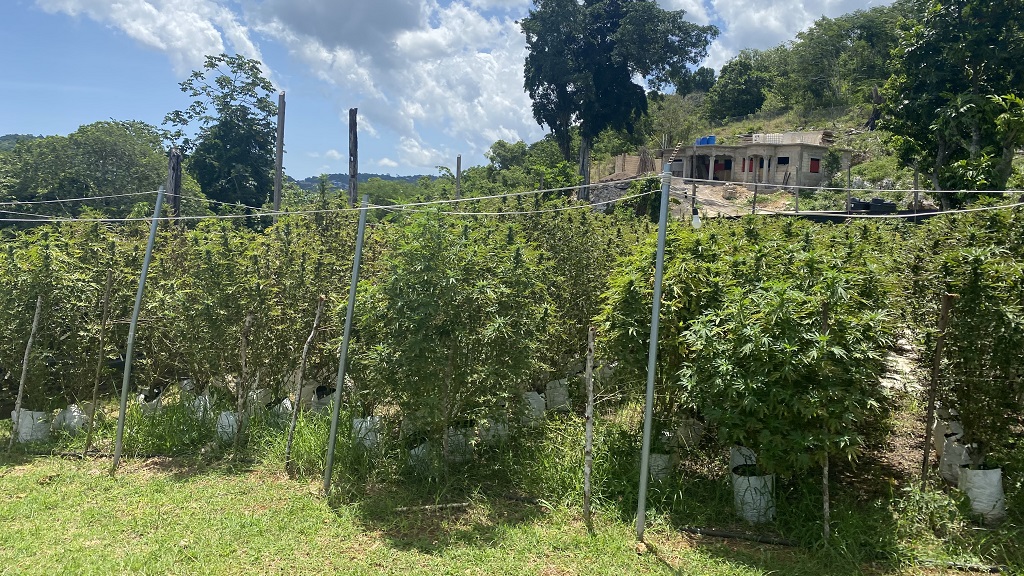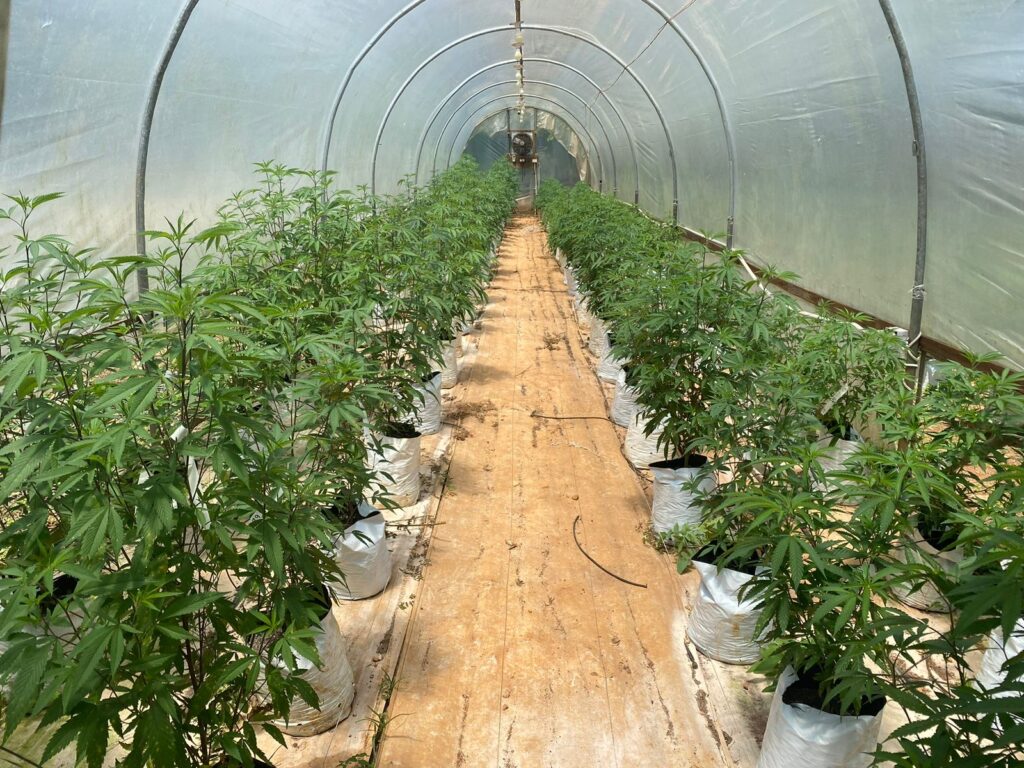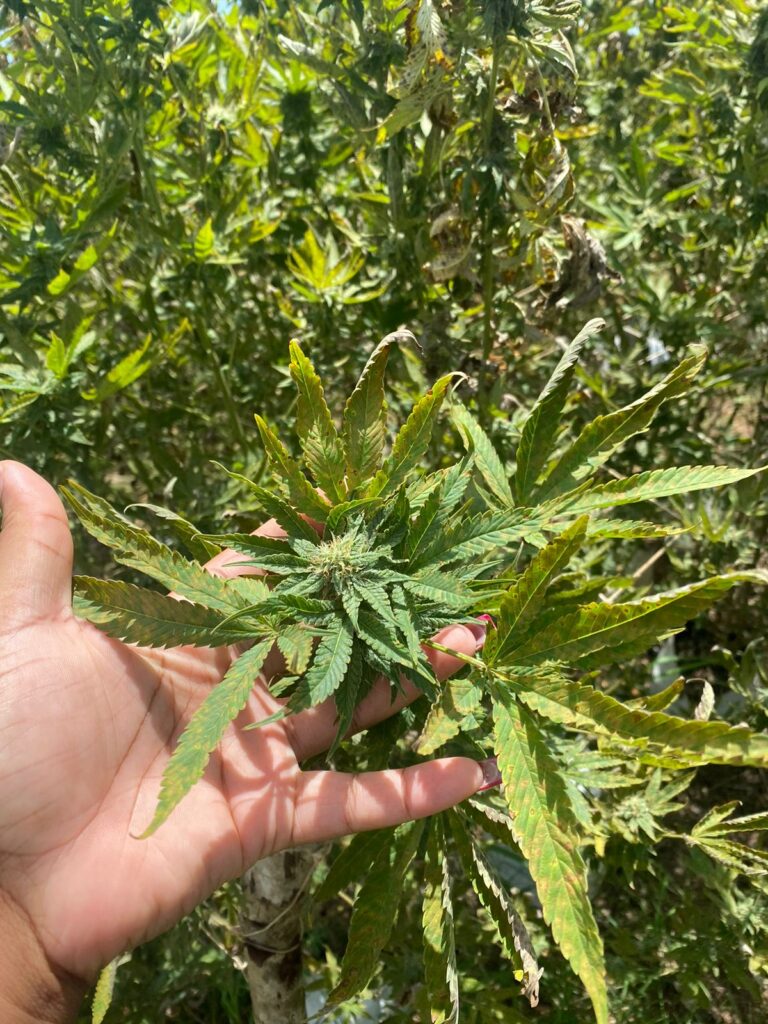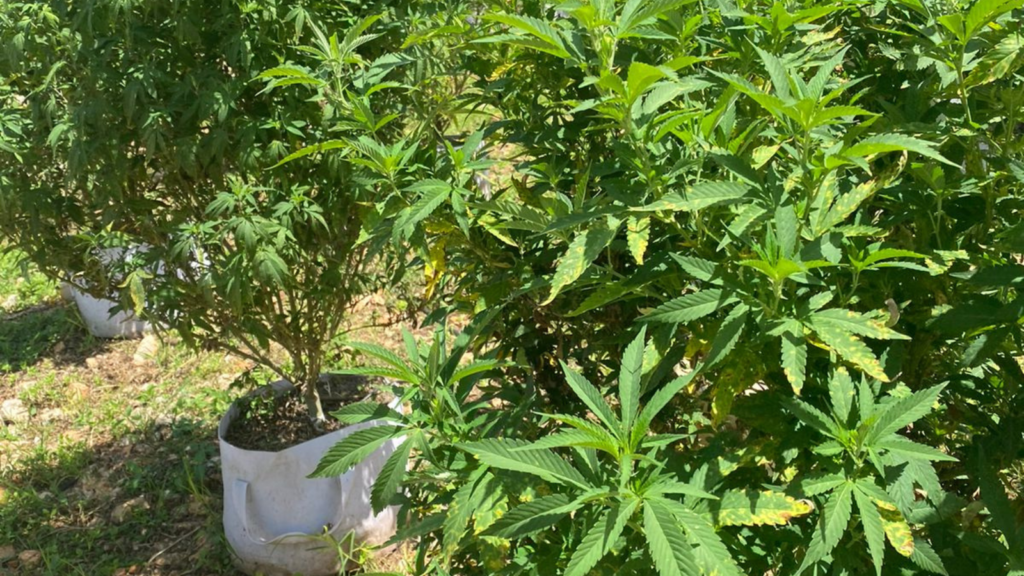The cannabis industry is one of Jamaica’s most distinctive and valuable assets, fostering research, medicine, tourism, and recreation, while significantly contributing to the nation’s economy. Renowned globally under names such as marijuana, weed, and ganja, cannabis has flourished in Jamaica, thanks to the island’s favourable climate and rich agricultural history. Here, fertile green mountains, abundant sunlight, and ample rainfall create pristine conditions for cannabis cultivation.
However, the sustainability of this thriving industry hinges on climate and climate justice. As such, ensuring that all stakeholders, particularly small-scale farmers and marginalised communities, are equitably supported in adapting to climate impacts is crucial for the future of Jamaica’s cannabis sector.

Climate challenges for cannabis
Although the success of Jamaica’s cannabis industry may seem indestructible, based on the favourable weather conditions in the Caribbean, it is intrinsically linked to climate, making cannabis cultivation vulnerable.
An article published by The Caribbean Community Climate Change Centre says Caribbean economies are most exposed to climate change as we experience grave impacts such as extended dry seasons, increased temperatures, intense rainfall, and flash floods. The most recent example is Hurricane Beryl, which ravished several parishes in Jamaica, damaging farms and properties.
“Climate change affects every industry,” said Recordo Graham, an agricultural specialist at the Cannabis Licensing Authority (CLA).
“For the cannabis industry, specifically, heavy rains will damage crops cultivated outdoors,” he said. Graham also said hurricanes and strong winds may cause some infrastructural damage, even to greenhouses.

This is the reality of a licensed cannabis farm owner in St. Ann, who wished not to be identified, as he shared his experience of cultivating cannabis amidst the challenges that come with climate change. The 26-year-old said he built his farm from scratch and shared that he regularly faces several challenges in ensuring his plants stay resilient through varying weather patterns.
Like Graham, the farmer believes there is little he can do to protect his plants if there are more hurricanes this season, referring to the recent hit from Beryl.
“The farm is not so good…the trees and the fence surrounding it have fallen on some of the plants. The cameras have also been damaged,” he lamented.
He said covering the damages sustained from the hurricane would be expensive and shared that relocating his plants was unfortunately not an option as he needed a bigger greenhouse to store them all. “We can’t protect them, we can only put mesh on them and hope for the best. When we get a hurricane warning we just don’t plant any more plants” he said.
Addressing these challenges is crucial for the industry’s sustainability, as these changes could significantly affect cannabis cultivation, thus impacting the economy and the livelihoods dependent on this sector. This is the case for several employees at this particular farm (ranging from those who cut, trim and monitor the plants) as the plants’ health directly impacts their income.

The farmer also shared that the plants are often impacted by heat. “You have a whole lot of different things that can affect the plants…there’s heat stress, and even not watering them on time can make them wilt, giving them leaf spots which spread to the other plants,” he said, as he motioned to some of his plants that were withered and dying.
He mentioned that he had recently seen up to a 30% cultivation loss of one of his popularly demanded strains, a type of weed known as “slurricane”, because of higher temperatures the island experienced a few months ago. “It’s so bad that I can’t even diagnose it anymore. Me just growing them til the fruits ripe then we’ll start all over again” he said.
The small community where his farm is located does not have running water, which makes farmers heavily dependent on rainfall. “ Sometimes I have to purchase water which can cost up to JMD 20,000 when there is a dry season, such as the drought Jamaica experienced a few months ago,” he said.
Research from the National Library of Medicine (NLM) in the United States of America indicates that cannabis is “a water and nutrient-intensive crop,” which requires much more water than other commodity crops, adding to the farmer’s claims.
The young farmer however said rain is only sometimes a blessing, as too much rain can be a nuisance, such as the recent rains experienced since the passing of Hurricane Beryl.
‘’This is what the rain can do to them,” he said, referring to a bag of light brown cannabis plants, “we call them “bad buds”, they are not safe for consumption, so it’s just a waste.”

Human activity affects the industry
Human activity is also another area of concern in the cannabis cultivation industry, as unregulated farming practices inadvertently pose risks to climate sustainability practices. “Yes, the climate is constantly changing, but there are a lot of human-induced influences that are possibly speeding up the changes we are seeing,” says Dr Machel Emanuel, Scientist at the University of the West Indies (UWI),
He explained that the environment is threatened by illegal cannabis cultivators. “Our natural resources are paramount to protect, but because cannabis is illegal, people will go to the extreme as it is a form of income that a lot of communities depend on,” he said.
Dr. Emanuel shared that some illegal cannabis farmers discreetly cut down forest trees for their farms, in hopes of escaping authorities that will raid their land if found. “The flora and fauna are being compromised…and then if you’re growing cannabis, you need pesticides and fertilisers, so they are polluting the water sources as well,” he said.
For this, Graham from the CLA said there is a wealth of information for the public on how to cultivate legally. “Information on how people can get licences for their farms is on the website and there are a lot of different channels out there where you can find information,” he said.
He also shared that the CLA facilitates sensitization sessions but said having these sessions post-COVID is sometimes challenging. “We do it in various parts of the country, though COVID impacts face-to-face meetings, we have other workshops planned.”

Historical roots and climatic advantages
“When you drive around Jamaica, you tend to see people in three motions. Either they are rolling, rubbing, or the spliff hanging. It’s a cultural thing, and herb and Jamaica are synonymous” says Dr. Emanuel, who extensively researches the history and cultivation of cannabis in the region and beyond.
According to his findings, cannabis first came to Jamaica from Eurasia in the 1600s, as Spanish colonisers used the plants as fibre crops for cordage, then later by Indian indentured labourers, who introduced ganja rituals to Jamaica.
He shared that the plant became a deep part of our way of life as it integrated communities, referring to our deep involvement in agriculture.
Likewise, a notable international biosciences company with cannabis cultivation operations in Jamaica, JMCC Group, notes that although cannabis came to Jamaica from other regions, the plants adapted well to Jamaica’s climate, establishing the nation as a leader in the industry for other countries to follow.
“Jamaica boasts an optimal year-round growing environment with near-equal portions of daylight and night. Natural humidity is above 50%, ideal for cannabis cultivation,” the company says.
Cannabis, however, still has its fair share of controversies, as many remain on the fence about its use and cultivation practices. An article titled “Marijuana Myths and Missed Opportunities” claims the stigma surrounding marijuana in Jamaica can be traced back to social unrest, including the prosecution of Rastafarians during the 1950s-1960s, claiming “…the war on Rastas became the war on ganja as well.” Here, marijuana was seen by elites as a dangerous drug and, likewise, a catalyst for the black empowerment movement, which the government, at that time, did not tolerate.
However, Richard Ball, a 40-year-old Rastafarian said marijuana is simply a sacred plant that helps to channel a sense of peace and happiness for those who use it. But he also said he has seen the implications of climate change on his cultivation. “Based on my experience, marijuana is delicate, it needs attention…if it gets too much rain its bad, too much sun, it’s bad,” he said.

Legal framework and industry regulation
Despite the widespread belief that Jamaica is now a cannabis haven with few to no restrictions, the Dangerous Drugs (Amendment) Act (DDA) of 2015 specifies that cannabis use is still illegal, but has been “decriminalised.” This means the use of cannabis is only permissible up to 2 ounces for individuals aged 18 and over, and in other instances, for sacramental and religious purposes by the Rastafarians. The CLA, established under the DDA in 2016 regulates services directly linked to the cannabis industry, encompassing medicinal and research purposes.
Even with its legal limitations, Jamaica substantially leverages this provision. This is evident in a recent Statista report which predicts the country’s cannabis industry could generate as much as US$41 million by this year. Cannabis farms like Jaccana and Cannabliss of St. Ann and Jamaican Leaf Ltd of St. Elizabeth, serve as hotspots for educational and recreational tours. Here, they offer firsthand experiences of cannabis cultivation, and for some, access to a variety of medicinal treatments through dispensaries and lounges.
Additionally, research from Dr. Emanuel in his “History of Ganja” paper says 160 cannabis licences have been issued by the CLA as of 2024, indicating increased access to cannabis-related services.
Ensuring the resilience of Jamaica’s cannabis industry amidst climate change requires a collaborative approach. By fostering sustainable farming practices, supporting small-scale farmers, and promoting equitable policies, Jamaica can safeguard this vital sector. This not only preserves the island’s agricultural heritage but also secures the livelihoods of countless individuals reliant on cannabis cultivation. Addressing climate challenges head-on will be essential in maintaining Jamaica’s position in the global industry and ensuring sustainable growth for future generations.
—
This story was originally published by Loop News Jamaica, with the support of the Caribbean Climate Justice Journalism Fellowship, which is a joint venture between Climate Tracker and the Open Society Foundations.